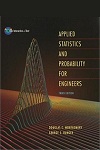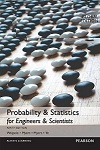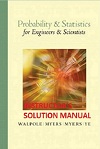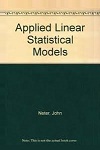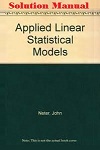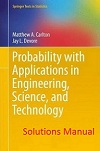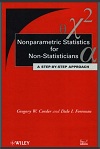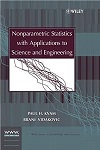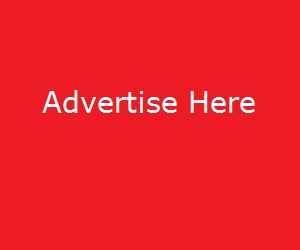MathSchoolinternational contain thousands of
Mathematics Free Books and
Physics Free Books. Which cover almost all topics for students of Mathematics, Physics and Engineering. We have also collected other
Best Free Math Websites for teachers and students.
for teachers and students.
Here is extisive list of
Probability and Statistics Books. We hope students and teachers like these textbooks, notes and solution manuals.
Share this page:-
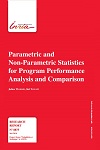
About this book :-
Parametric and Non-Parametric Statistics written by
Julien Worms, Sid Touati
This text explore the difference between parametric and non parametric statistics applied on program
performance analysis. Additional statistical metrics for analysing and comparing program
performances give the user more precise decision tools to select best code versions, not necessarily
based on mean or median numbers. Also, provide a new metric to estimate performance
variability based on Gaussian mixture model.
Book Detail :-
Title: Parametric and Non-Parametric Statistics for Program Performance Analysis and Comparison
Edition:
Author(s): Julien Worms and Sid Touati
Publisher:
Series:
Year: 2016
Pages: 74
Type: PDF
Language: English
ISBN:
Country: US
Get this Books from Amazon
Join our new updates, alerts:-
For new updates and alerts join our WhatsApp Group and Telegram Group (you can also ask any [pdf] book/notes/solutions manual).
 Join WhatsApp Group
Join WhatsApp Group
 Join Telegram Group
Join Telegram Group
Book Contents :-
Parametric and Non-Parametric Statistics written by
Julien Worms, Sid Touati
cover the following topics.
'
1. Introduction and motivations
1.1 On the usage of computers in practice
1.1.1 Historical usage of computers: batch mode
1.1.2 Usage of computers for doing experiments in research projects in computer science and engineering
1.1.3 Nowadays usage of computers in everyday life devoted to production computing
1.2 Some known factors that make program performances vary
1.2.1 Technological factors
1.2.2 Micro-architectural factors
1.2.3 Software competition to access shared resources
1.2.4 Operating system factors
1.2.5 Algorithmic factors
1.3 Fundamental assumptions to know before using statistics that may bring to wrong conclusions
1.3.1 Independence of the measurements
1.3.2 Continuous and discrete random variable models, ties in the data
1.4 Statistical considerations related to program performance evaluation
1.4.1 Program performance variability is generally not of simple Gaussian type in practice
1.4.2 What if performances do not vary in practice ?
1.5 Parametric versus non-parametric statistics
1.6 Report plan description
2. Basic notations and definitions in statistics and probability theory
3. Gaussian mixtures
3.1 Definition of the Gaussian mixtures family
3.2 Motivation for Gaussian mixtures modelling in our context
4. Clustering method
4.1 Estimation of the parameters of the mixture for fixed K
4.2 Determination of the number K of components of the mixture
4.3 Experiments on clustering
5. Checking the fitting of the data to the Gaussian mixture model
5.1 Description of the method
5.1.1 Preliminaries about goodness-of-fit
5.1.2 Bootstrap as a calibration tool: the KSfit test
5.1.3 Various remarks on the adopted bootstrap methodology
5.2 Validation of the fitting method by simulations
5.2.1 Validation of the calibration risk
5.2.2 Power of the goodness-of-fit test
5.2.3 A pinch of undersampling yields more accurate risks for large sample sizes
5.3 Experiments on data-model fitting RR n° 8875 4 Worms and Touati
6. New program performance metrics
6.1 The metric I1: mean difference between two code versions
6.1.1 Non-parametric estimation of I1
6.1.2 Parametric estimation of I1
6.2 The metric I2: probability that a single program run is better than another
6.2.1 Non-parametric estimation of I2
6.2.2 Parametric estimation of I2
6.3 The metric I3: probability that a single run is better than all the others
6.3.1 Non-parametric estimation of I3
6.3.2 Parametric estimation of I3
6.4 The metric I4: the variability level
6.5 Experiments: analysing parametric versus non-parametric program performance metrics by simulation
6.5.1 Estimation quality measurement and simulation methodology
6.5.2 Additional precisions on the simulation methodology
6.5.3 Simulation results for I1: mean difference between two code versions
6.5.4 Simulation results for I2: probability that a single program run is better than another
6.5.5 Simulation results for I3: probability that a single run is better than all the others
6.5.6 Simulation results for I4: the variability level
6.6 Empirical study of variability levels of programs execution times
7. Related work on code performance analysis and evaluation using statistics
7.1 Observing execution times variability
7.2 Program performance evaluation in presence of variability
7.3 The Speedup-Test: analysing and comparing the average and median execution times
7.4 References on Gaussian mixtures, goodness-of-fit and bootstrap
8. Perspectives and discussions
8.1 Multi-dimensional performance modelling
8.2 Considering mixtures of other distributions
8.3 Discussion: how to decide about the best code version ?
9. Conclusion
A The VARCORE software for parametric and non parametric statistics
B Experimental data presentation
?1
?2










